In our last blog, Fr. Bob spoke about the second leg of our Catechism of the Catholic Church, “how we celebrate.” He discussed how God continues to give of himself through the Sacred Liturgy. Here, Featured Blogger David Augustine, parishioner of St. Anne who is studying Liturgical Studies at the University of St. Mary of the Lake in Mundelein discusses the Liturgy from a bibilical perspective — unveiling its mystery and healing power. During Lent, perhaps consider attending daily Mass: 6 p.m. at St. Catherine’s Chapel on Tuesdays; 6 p.m. at St. Anne’s on Wednesdays and Thursdays; and 8 a.m. at St. Anne on Fridays; and 9 a.m. at St. Anne’s on Saturdays.
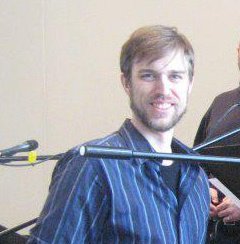 The created order is like an iceberg; only 10% of it is above water – in other words, visible. Faith pulls back the veil that shrouds its supernatural inner depths. Through the sacramentality of the Liturgy, we are called to experience a
The created order is like an iceberg; only 10% of it is above water – in other words, visible. Faith pulls back the veil that shrouds its supernatural inner depths. Through the sacramentality of the Liturgy, we are called to experience a
healing of the eyes, transforming how we look at the world.
2 Kings records an event in the anything-but-mundane life of the prophet Elisha (who lived 9thcent. B.C.). The man of God was in the Israeli city of Dothan when Syrian chariots
surrounded the city to capture him. On seeing the chariots, Elisha’s servant
panicked, “Alas, my master! What shall we do?” Elisha responded with his usual
calm, ““Fear not, for those who are with us are more than those who are with
them.” Then Elisha prayed, and said, “O Lord, I beg you, open his eyes that he may see.” So the Lord opened the eyes of the young man, and he saw; and behold, the mountain was full of horses and chariots of fire round about Elisha.” (2 Kings 6:15-23 RSV) These are the hidden and spiritual depths that are opened up through prayer by the “man of God”.
Shortly before his Passion, Jesus led his inner band of disciples – Peter, James and John – up on a mountain to pray. Before their eyes and “as he was praying, the appearance
of his countenance was altered, and his clothing became dazzling white.” (Lk
9:28-36) After this, his disciples saw him conversing with Moses and the
prophet Elijah as the cloud of God’s glory overshadowed them. While in prayer,
the divine glory veiled by Jesus’ humanity flared up, transfiguring his
countenance with the uncreated light of God’s glory. He is now seen for what he
really is: the archetypal image of the Father, he who “bears the very stamp of
his nature” (Heb 1:3), he who informs both the Law (Moses) and the prophets
(Elijah). The Lord has given his disciples a glimpse of the glory to come, the
glory permanently set forth in his resurrected state. This is the same glory
given to us in the Baptismal Liturgy as an earnest of our own resurrection: “he
has put his seal upon us and given us his Spirit in our hearts as a guarantee”
(2 Cor 1:22) so that the “life of Jesus may also be manifested in our bodies.”
(2 Cor 3:10)
On the day of his Resurrection, the Lord joined a pair of his disciples as they walked the road from Jerusalem to Emmaus. They failed to recognize him. When they arrived at
Emmaus, however, the Lord sat at table with them, and “he took the bread and
blessed and broke it, and gave it to them. And their eyes were opened and they
recognized him; and he vanished out of their sight.” Later, they told the other
disciples how “he was known to them in the breaking of the bread.” (Lk
24:13-35) Sound familiar? This passage, like the other post-Resurrection
narratives, is what we call, in church language, “ecclesiological”. This means
that it tells us something about the Church. Which brings us to the Eucharist.
In both the proclamation of the Word of God and in the sacraments of the Church
(above all, the Eucharist), Christ continues to be present to his disciples. It
is there that he is known by people of faith who devote themselves to prayer.
In the “daily bread” of the Eucharist, we are given the ongoing challenge to be a people of
faith, a people who pull back the veil on the heaviness of empirical reality
and see the glory of God manifested in our midst. The Eucharist is an epiphany;
it is a clarion call to see materiality transfigured in the light of his glory,
we ourselves being transformed in the process. Or, in the words of St. Paul,
“Though our outer man is wasting away, our inner man is being renewed every day
… because we look not to the things that are seen but to the things that are
unseen; for the things that are seen are transient, but the things that are
unseen are eternal.” (2 Cor 4:16-18)
Through Liturgy, we are called to a transfiguration of the eyes. In John 9, Jesus healed a man blind from birth. Jesus “spat on the ground and made clay of the spittle and
anointed the man’s eyes with the clay, saying to him, ‘Go, wash in the pool of
Siloam” (which means Sent). So he went and washed and came back seeing.” (John 9:1-12) Without this prerequisite healing, all is darkness. “The eye is the lamp of the body. So, if your eye is sound, your whole body will be full of light; but if your eye is not sound,
your whole body will be full of darkness. If then the light in you is darkness,
how great is the darkness!” (Matt 6:22-23) A creation rendered opaque to God’s
glory is darkness. Faith transforms it into light.
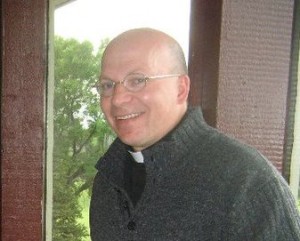 A few weeks ago in a homily I used the image of a 4-legged table to describe a holistic approach to our Catholic faith. If you remove one leg from a table, you can make it work depending on where you place objects on the surface. If you break off a second leg, you don’t have a very useful table. You might get inventive and prop the table in a corner, and get by, but you’d have to admit the limitations of the situation. Our faith stands on four legs, or pillars. The Catechism of the Catholic Church is structured to reflect these four pillars, and gives us a quick way of checking on the health of our spiritual table, on how authentically we are living our Catholic faith.
A few weeks ago in a homily I used the image of a 4-legged table to describe a holistic approach to our Catholic faith. If you remove one leg from a table, you can make it work depending on where you place objects on the surface. If you break off a second leg, you don’t have a very useful table. You might get inventive and prop the table in a corner, and get by, but you’d have to admit the limitations of the situation. Our faith stands on four legs, or pillars. The Catechism of the Catholic Church is structured to reflect these four pillars, and gives us a quick way of checking on the health of our spiritual table, on how authentically we are living our Catholic faith.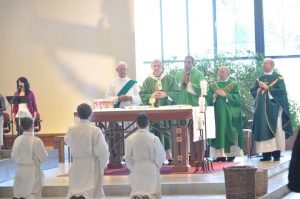 The ‘second leg’ is an answer to the question: How does God continue to effectively give us
The ‘second leg’ is an answer to the question: How does God continue to effectively give us It is clear, from these words of Jesus, that he intends to give himself to us sacramentally. This gift is not ‘just symbolic’, but is a true gift of God himself. The life contained in the sacraments is made effective through the saving sacrifice which Christ endured in his Passion. His life’s blood, poured out sacrificially on the cross, is the life of the Church. There is a wonderful depth, vividness and ‘down to earth’ quality to the sacramental and liturgical realties. For this reason Jesus clothed himself in our flesh, so that he could give himself to us through our senses, through our humanity. The liturgy celebrates this wonderful way of God’s relating to us, through which we are drawn into his life.
It is clear, from these words of Jesus, that he intends to give himself to us sacramentally. This gift is not ‘just symbolic’, but is a true gift of God himself. The life contained in the sacraments is made effective through the saving sacrifice which Christ endured in his Passion. His life’s blood, poured out sacrificially on the cross, is the life of the Church. There is a wonderful depth, vividness and ‘down to earth’ quality to the sacramental and liturgical realties. For this reason Jesus clothed himself in our flesh, so that he could give himself to us through our senses, through our humanity. The liturgy celebrates this wonderful way of God’s relating to us, through which we are drawn into his life. Perspective on 3-in-1: The Holy Trinity by Mike Nuzzo
Perspective on 3-in-1: The Holy Trinity by Mike Nuzzo 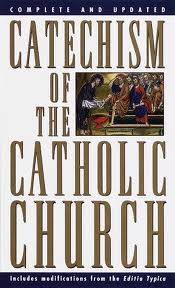 A Roadmap for Catholics: Intro to catechism by Fr. Bob Weighner
A Roadmap for Catholics: Intro to catechism by Fr. Bob Weighner Pope John Paul II commissioned new catechism in 1986
Pope John Paul II commissioned new catechism in 1986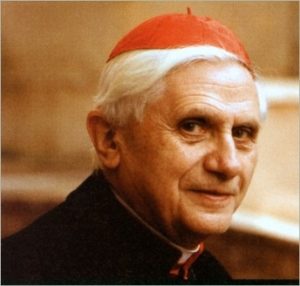 Cardinal Joseph Ratzinger (now Pope Benedict XVI) chaired commission
Cardinal Joseph Ratzinger (now Pope Benedict XVI) chaired commission